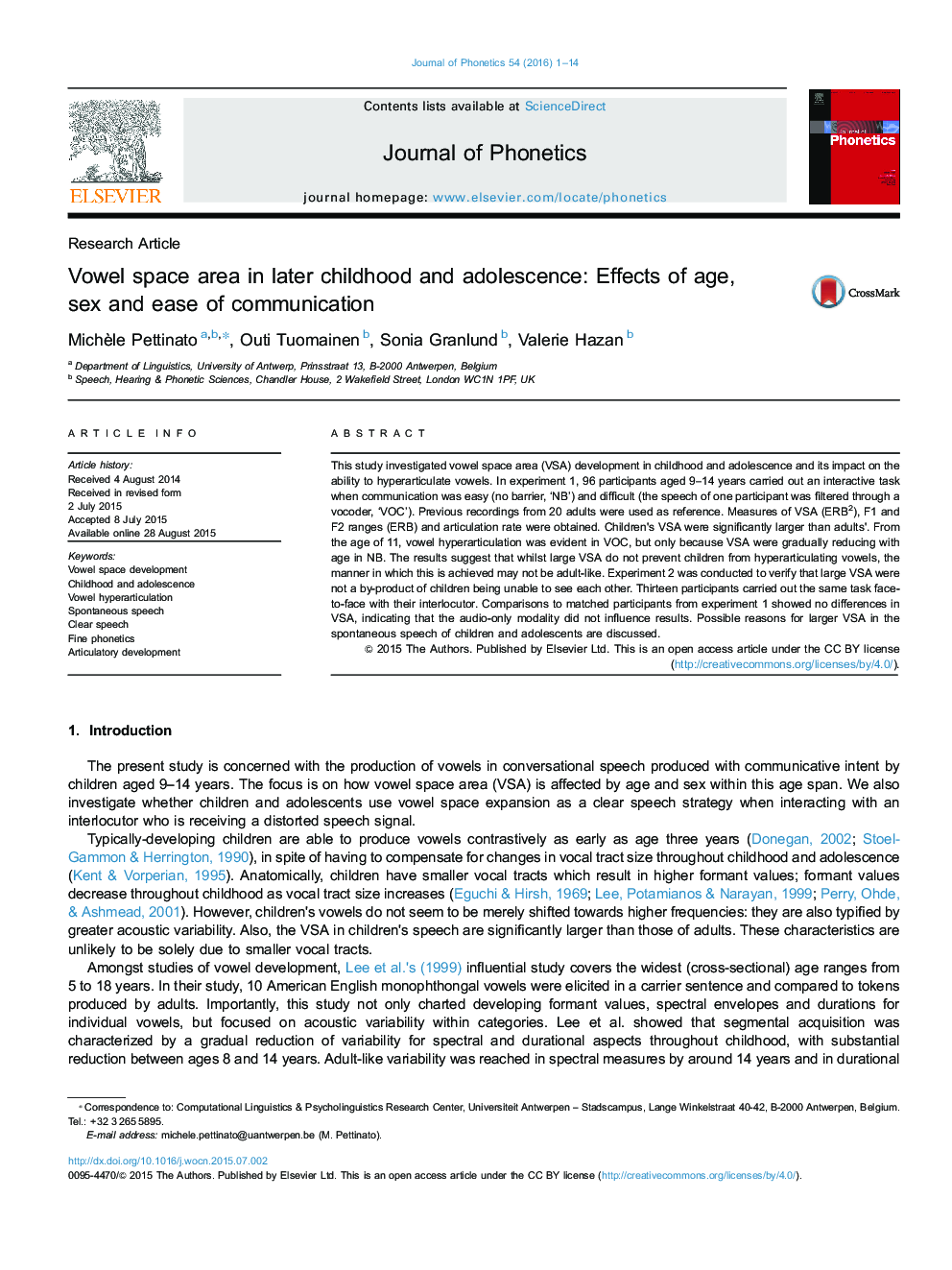| Article ID | Journal | Published Year | Pages | File Type |
|---|---|---|---|---|
| 7532851 | Journal of Phonetics | 2016 | 14 Pages |
Abstract
This study investigated vowel space area (VSA) development in childhood and adolescence and its impact on the ability to hyperarticulate vowels. In experiment 1, 96 participants aged 9-14 years carried out an interactive task when communication was easy (no barrier, 'NB') and difficult (the speech of one participant was filtered through a vocoder, 'VOC'). Previous recordings from 20 adults were used as reference. Measures of VSA (ERB2), F1 and F2 ranges (ERB) and articulation rate were obtained. Children's VSA were significantly larger than adults'. From the age of 11, vowel hyperarticulation was evident in VOC, but only because VSA were gradually reducing with age in NB. The results suggest that whilst large VSA do not prevent children from hyperarticulating vowels, the manner in which this is achieved may not be adult-like. Experiment 2 was conducted to verify that large VSA were not a by-product of children being unable to see each other. Thirteen participants carried out the same task face-to-face with their interlocutor. Comparisons to matched participants from experiment 1 showed no differences in VSA, indicating that the audio-only modality did not influence results. Possible reasons for larger VSA in the spontaneous speech of children and adolescents are discussed.
Related Topics
Social Sciences and Humanities
Arts and Humanities
Language and Linguistics
Authors
Michèle Pettinato, Outi Tuomainen, Sonia Granlund, Valerie Hazan,
